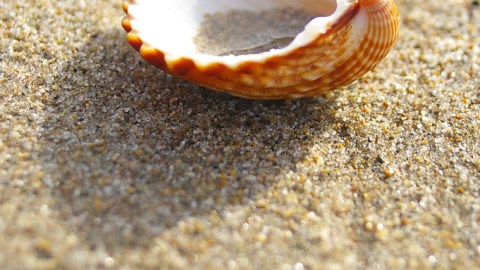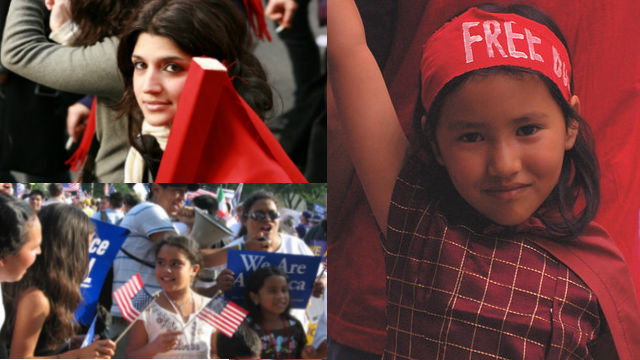Sand Grains on a Distant Shore

In his book Unweaving the Rainbow, Richard Dawkins opens with an arresting analogy:
“We are going to die, and that makes us the lucky ones. Most people are never going to die because they are never going to be born. The potential people who could have been here in my place but who will in fact never see the light of day outnumber the sand grains of Arabia. Certainly those unborn ghosts include greater poets than Keats, scientists greater than Newton. We know this because the set of possible people allowed by our DNA so massively exceeds the set of actual people. In the teeth of these stupefying odds it is you and I, in our ordinariness, that are here.”
As small and ordinary as they may be, our individual lives are spectacularly wonderful things. Each of us is one permutation out of countless possibilities, like one grain thrown up by randomness out of an ocean of sand. Each of us gets the chance to live once, to bring our distinctiveness to the world, and then each of us will die, never to exist again. Death is a tragedy, but how small it seems when weighed against the incredible gift of getting to live in the first place!
I think at times of the inconceivable odds that resulted in DNA’s twisting double helixes combining to make me, me, out of all the innumerable trillions of human beings who could have been here in my place. My existence is the end result of an unimaginably vast chain of chance events, funneled and guided through the ages by the invisible tug of natural selection, billions of unborn ghosts spinning away into oblivion every second as each decision point cleaves the tree of contingency.
My genome is a patchwork, a convergence of different genes assembled by evolution over the ages. I have genes for lactose tolerance and decreased melanin, from ancestors a few dozen or a few hundred generations removed, pastoral herders who lived at high latitudes. I have genes for curiosity and wanderlust, the genetic legacy of the black men and women who were the first to leave our ancestral African homeland and spread out across the face of the world.
I have genes for upright walking and a larger braincase, first sculpted on the savanna as our apelike ancestors came down from the trees. I have genes for body hair and sweat glands and the three inner ear bones, inherited from our tiny mammalian ancestors who scurried and hid in the Triassic night to avoid the great stomp and glittering eyes of the world’s reptilian masters. I have genes for five fingers and five toes, inherited from the fishlike tetrapods that swam and waded in the humid, marshy shallows of Devonian jungles. I have genes for a spinal cord, gifted to me by the wormlike ancestor of vertebrates that curled through warm Precambrian seas. And deep within my every cell, there are the mitochondria, the genetic homeobox, cytochrome C, the Krebs cycle – all common elements in the toolkit of life, some inherited from the first animals or the first eukaryotes, others dating even further back to the simple, ancient lifeform that was the common ancestor of every living thing on this planet.
The story of life is a rollercoaster ride of glory and disaster, of defeat and triumph. The planet’s fossil record captures the many catastrophic blows that drove life on Earth to near-extinction, and the many subsequent resurgences as life sprang back in its exuberance, bringing forth new species to replace the vanished ones. That striving, that tenacity, that too is a hallmark of Earth and part of the generic heritage we all share.
This wasn’t always the consensus view, of course. Prior to Darwin’s era, the prevailing belief in paleontology was of a static world, where all species were God’s perfect and eternal creations, each one a link in the great chain of being. The idea that any of them could have been lost to extinction was enormously controversial – blasphemous, you might say. Some of the first fossil hunters clung to the notion that the forms they saw preserved in stone still existed, alive and undiscovered, somewhere on the planet. But the evidence eventually mounted until that view was impossible to sustain any longer, despite its theological implications.
But the reality surpasses the fantasy. Unlike the believers who explain in all sincerity that their myths are “true but not real“, our origin story is both true and real. And it’s far grander and more majestic than the small, unimaginative, human-centered myths of antiquity. Just think of what it implies about our interconnectedness: the pulsing of a jellyfish’s bell, the coordinated swerve of a school of fish, the dapple of sunlight through a redwood’s vast green canopy, the explosive colors of a coral reef, the hidden biospheres in sulfuric hot springs and frozen Antarctic lakes – all of them are kin to me. Choose any of those living things, and however it twists and turns, there’s a path backwards along the tree of life that leads to a point where my ancestors unite with theirs. (This is the subject of another outstanding book by Dawkins, The Ancestor’s Tale, which I highly recommend.)
We all share in this history, and we all have the potential to carry it forward, which ought to be part of what makes human life so valuable. Each of us is a bearer of that heritage, a single outward-reaching thread of life’s multibillion-year journey through time. And if life survives into the far future, if one day we reach that unimaginably distant shore that beckons to us, any of us might have played a part in reaching it; in the end, anyone’s genes might turn out to be essential. There are those who say that atheism devalues life, and I answer – could anything give us a better sense of how rare, fragile, and precious life really is?
Image credit: Lali Masriera, released under CC BY 2.0 license





